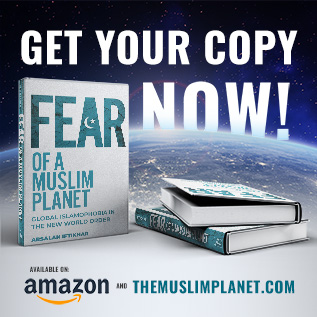From The Islamic Monthly

by Arsalan Iftikhar
The early 20th-century Yale geography professor Ellsworth Huntington once said that all of the “evidence points to Central Asia as man’s original home…For the general movement of human migrations [since early modern history] has been outward from that region and not inward” since that time. Bordered by Russia to the north and China to the east, the modern-day states of Central Asia (also sometimes referred to as the “Five-Stans”) include former Muslim-majority Soviet states like Uzbekistan, Tajikistan, Turkmenistan, Kyrgyzstan and Kazakhstan. Many of these Central Asian nations- which were major players during the “Silk Road” era- were pivotal during that time in helping to shape the economic and cultural ethos of a large swatch of the Asian continent as we now know it today.
Recently, I was given the opportunity to travel to Central Asia for a two-week speaking toursponsored by the U.S. State Department International Information Program (IIP) in the nations of Kyrgyzstan and Kazakhstan to speak to diverse audiences on current issues related to Islam, human rights and the global media today.
During my two-week official State Department speaking tour in Central Asia, I had the unique opportunity to meet with government officials, local NGO leaders and thousands of university students in the region to share my professional experiences as an American Muslim journalist and human rights lawyer and answer hundreds of questions about the role of religion in the public square, US relations with Muslim-majority nations and more. The majority of the first week of my State Department trip took place in the capital city of Bishkek in Kyrgyzstan. On my first evening in Central Asia, I joined a group of government officials, NGO heads and representatives of the local Muslim community at the personal residence of United States Ambassador to Kyrgyzstan, Ambassador Pamela Spratlen.

During our dinner conversation at Ambassador Spratlen’s residence, I heard from these government officials and NGO leaders about the role of religion within the public square in Kyrgyzstan. As an international human rights lawyer, I always like to ask foreign government officials about “free exercise of religion” issues and about legal protections for religious minorities within their respective countries. At the ambassador’s house, one of the main recurring themes that I began to hear from most of the (non-governmental) representatives was their concern about the rampant levels of “religious illiteracy” amongst their population; especially in relation to Islam, since the majority of Central Asian citizens would self-identify themselves as “Muslim” when asked about their religious affiliation. This concept of “religious illiteracy” was a major topic of conversation the next morning during my personal meeting with the Grand Mufti of Kyrgyzstan, Mr. Maksat Toktomushev. An interesting fact about the Grand Mufti is that although he was born and raised in Kyrgyzstan, he had spent 10 years of his life studying Islam in Pakistan and actually spoke fluent Urdu.
Now because I speak Urdu fluently as well, we spent our entire one-hour meeting speaking in Urdu (so neither my official translator nor the US Embassy staff accompanying me had any clue what the Mufti and I were discussing). By gaining the Mufti’s trust by speaking to him in Urdu, he became very comfortable with me and we openly began discussing the state of Islam and Muslims in Kyrgyzstan. Although he was located in the capital of Bishkek, he told me that he regularly corresponds with the several hundred imams under his directorate throughout the country on a regular basis (via conference calls and regular emails). When I asked him about the “religious illiteracy” that I was beginning to notice amongst the population, the Mufti pointed out that the former Soviet communist empire had basically suppressed all forms of religion for over 70 years and that people only begun revisiting their Islamic heritage after the independence of Kyrgyzstan after August 1991. After our very informative meeting, the Grand Mufti of Kyrgyzstan then proceeded to present me with a beautiful technicolor dreamcoat which basically made me look like a six-foot-four grape popsicle below.






